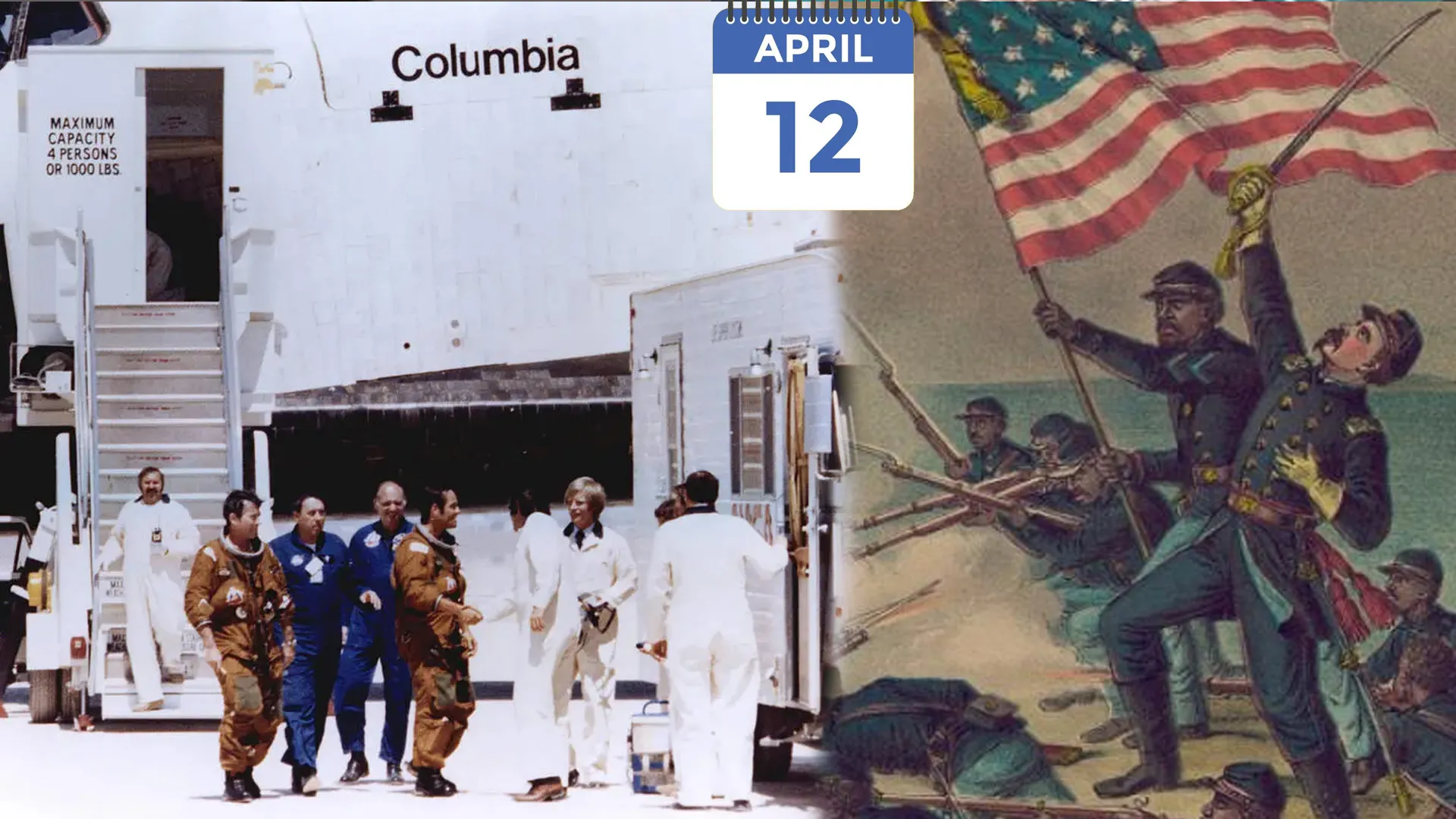April 12 remains indelibly marked in the pages of history as a time when great feats of scientific excellence, spaceflight, and profound political changes occurred. Years have passed, and this date has seen milestones defining contemporary science and international relations- from the maiden human foray into outer space to the inaugural day of the American Civil War.
Let us look at the importance of April 12 by way of three landmark historical events.
April 12, 1961: Yuri Gagarin Becomes the First Human in Space
April 12, 1961, saw the dawn of a new era in space travel when Soviet cosmonaut Yuri Gagarin became the first human to venture into outer space. At only 27 years old, Gagarin lifted off aboard Vostok 1, a Soviet-built spacecraft, and accomplished one orbit of the planet successfully. The landmark flight lasted for 108 minutes and had a maximum altitude of approximately 327 kilometres (203 miles).
Vostok 1 reached a speed of 27,400 kilometers per hour, and although the flight operated on full automation, engineers equipped Gagarin with backup manual controls in case of a malfunction. As the spacecraft soared into orbit, Gagarin famously shouted, “Poyekhali!” (Let’s go!) — a sound bite which went on to become legendary in space travel.
The international reaction to Gagarin’s flight was one of wonder and jubilation. His mission not only thrilled the Soviet Union but also made him an icon of human innovation and the potential for spaceflight. His feat heightened the Cold War race into space between the USSR and the United States, some weeks ahead of Alan Shepard’s first US spaceflight.
Gagarin’s legacy continues to inspire future generations. In his honour, April 12 is now observed as Yuri’s Night and International Day of Human Space Flight, commemorating the dawn of manned space missions.
April 12, 1981: NASA Launches Its First Space Shuttle
Precisely two decades after Gagarin’s flight, NASA sent out its historical milestone in the exploration of outer space on April 12, 1981, with the first flight of the space shuttle Columbia under the mission STS-1. The shuttle broke off from Cape Canaveral, Florida, and it was the first time that a reusable, manned spacecraft went into orbit.
Staffed by experienced astronaut Commander John Young and rookie space flyer Robert Crippen, the shuttle orbited for 54 hours, making 36 trips around Earth. It landed safely at California’s Edwards Air Force Base on April 14, demonstrating the viability of reusable space vehicles.
The flight was not without risk. Columbia’s innovative design included two solid rocket boosters and a gigantic external fuel tank — components never used on any previous manned missions. The success of the flight proved NASA’s Space Transportation System (STS) viable, setting the stage for a new series of scientific missions, space station construction, and satellite deployments.
But Columbia’s flight came to a tragic end on February 1, 2003, on its 28th mission. The shuttle broke apart when it re-entered the Earth’s atmosphere, killing all seven astronauts on board. In spite of the tragedy, the Columbia missions are an important part of space exploration history.
April 12, 1861: The American Civil War Begins
While April 12 is associated with space milestones, it is also the date of a somber page in American history. On this date in 1861, the American Civil War effectively began when Confederate forces fired on Fort Sumter, a Union fort in Charleston Harbour, South Carolina.
The tensions leading to the war had been developing for decades due to disagreements concerning slavery, states’ rights, and economic inequalities between the industrializing North and agricultural South. Abraham Lincoln’s election in 1860 intensified the South’s fear that slavery would soon end, prompting seven Southern states to secede and form the Confederate States of America.
Despite the fact that Fort Sumter was in Confederate-held territory, it was still held by the federal government. When President Lincoln tried to resupply the fort, Confederate General PGT Beauregard took this as an insult and initiated a 34-hour bombardment on April 12. Major Robert Anderson, who commanded the Union troops, surrendered the following day.
Interestingly, the first battle caused no deaths, but it triggered one of America’s bloodiest conflicts, claiming over 600,000 lives. Lincoln’s appeal for 75,000 Union volunteers in response to the attack added four more states to the Confederacy, moving the war into even higher gear.
A Day That Shaped the World
April 12 is a date that symbolizes triumph and turmoil — from the hopeful bound of Yuri Gagarin into space, the technological advancement of NASA’s first shuttle, to the tragic eruption of civil war in the United States. All of these have left a lasting legacy, not only in their own countries but worldwide.
As we mark these turning points, it’s a reminder of how history happens on seemingly mundane dates — altering the path of science, society, and the world as a whole.






















